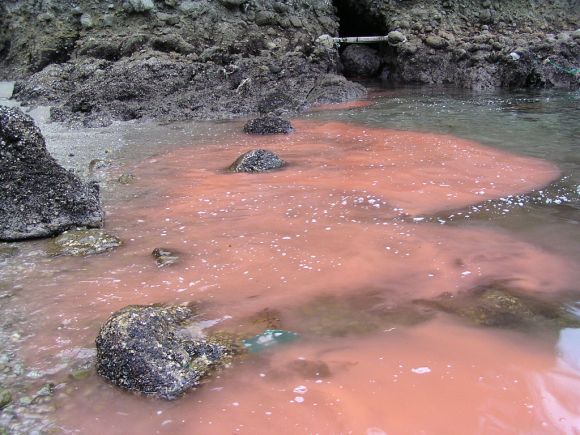
Japan is one of the cleanest countries you’ll encounter as a traveler. The inside of the bullet train is kept absolutely spotless, taxi drivers can be seen buffing their vehicles of dust and road grit while waiting for the next customer. Graffiti is rare here and men in jumpsuits are employed to scrape off gum and anything else adhered to train station floors. Glamorous and gleaming is the way the Japanese like things. Even diesel trucks are washed down in their terminals after a day on the roads.
So it’s no surprise that the city streets are litter-free, that public trash bins ask you to separate your refuse into burnable and non-burnable bins, or that the Japanese have a reputation for taking their garbage home with them when attending sporting events.
So it may have been a surprise to some of our readers when someone commented on the trashiness of Japanese beaches in response to my previous article on Japanese beach culture, saying: “The number one beach activity in Japan is actually turning it into a giant open dump, full or empty beer cans, cigarette buds, and plastics of all kinds. It’s a big paradox when you see how clean the streets are.”
While I can’t speak for other beaches, our public beach on Shiraishi Island is quite clean. Beach-goers clean up after themselves and take their garbage home with them. We regularly clean the beach of any stray debris that washes up, including P.E.T. bottles, plastic bags and cans.
But I think I know what our disgruntled reader was talking about. And it’s one of Japan’s biggest, dirtiest secrets that needs to be addressed.
While Japan is known for recycling garbage and having clean streets, there is one big secret that most people don’t know about.
▼Trash cans that are found in stations and in front of convenience stores in Japan ask you toss your waste into the appropriate bin: Cans & Bottles, Newspapers & Magazines, and All Others
▼At 7 a.m. on the way to Okayama Station, this coffee can in the gutter was the only piece of litter I could find!
▼As you can see, the water and beach on Shiraishi Island (where I live in the Seto Inland Sea), is sparkling clean.
You may not know it, but Japan has a garbage problem. Those who live here are well aware of the refuse constantly dumped on Mt. Fuji, a cultural World Heritage Site. As a matter of fact, because of Mt. Fuji’s garbage dispute, the sacred mountain did not qualify for status as a natural World Heritage Site when it was first nominated. After being turned down, it was resubmitted as a Cultural World Heritage Site instead, in which it qualified due to its significance to Japanese culture. Only now that it has become a World Heritage Site has the garbage predicament being tackled.
Other people are cleaning up Japan as well.
Mangetsuman is an individual who has taken it upon himself to clean some of the streets of litter in Tokyo.
▼Mangetsuman (Full Moon Man) volunteers his time to clean up streets and entertain people while doing so.
Greenbird is an NPO that has “teams” all over Japan of volunteers who go out and clean the streets of litter.
So it seems that Japan is doing a pretty good job with garbage on land. But what about the sea?
The truth is that the Seto Inland Sea is filthy. Sailors often have to dive into the water to untangle their engine propellers from floating plastic bags that get wrapped around the blades, freezing the shaft. Sailors, kayakers and fishermen see oil floating on top of the water as well as unbroken chains of garbage floating by on currents that are meant to bring plankton and seaweed to sea creatures to feed on.
This flotsam is regularly tossed up onto beaches that dot the Inland Sea. Take a look yourself:
Where is this? Shiraishi Island. And believe it or not, that video was taken on a pretty good day for that beach. I’ve seen it much worse.
▼Same beach, different day
These “angry beaches” as I call them, are all over the Seto Inland Sea. I’ve seen plastic car bumpers, old TVs, even a dead cat that have washed up here. But the majority of the plastic is P.E.T. bottles, something people know they can recycle.
Remember I told you Shiraishi Island has clean beaches? Well, we do. But we also have dirty ones. Our public beach is clean only because it faces West, and the sea’s current carries the dreck past it. With just a little effort, we can keep the beach garbage-free. But the East side of the island is different. Junk is deposited on that side of the island daily.
Japanese people who live in this area say most of the Inland Sea garbage comes from rivers on the mainland. When heavy rains, storms or typhoons fill the rivers, the water rushes down to the mouth at the Inland Sea. With it comes refuse that has been dumped into the rivers.
Who knows how long this plastic floats around the Inland Sea, or how many beaches it washes up on and off of, before it eventually empties out into the Pacific Ocean or the Japan Sea via one of three narrow straits that takes water in and out of the Inland Sea with the tides.
▼Even tiny pieces of plastic get hung up in the natural debris that washes up on shore.
Isn’t it illegal to dump into the rivers? Yes. It’s called fuhou touki (illegal dumping) and is subject to punishment.
In fact, water pollution control laws have been around since 1970. In 1973, the Environmental Agency implemented a Special Law for the Conservation of the Environment of the Seto Inland Sea, an area of Japan undergoing industrialization and thus degradation as a result of good economic times. The law was meant to improve water quality and the sea areas around reclaimed land used to build factories. The destruction of the marine environment had brought on “red tides,” (algae blooms) which resulted in a depletion of oxygen in the sea, which killed off much of the fish population. Wow! Right?
But most laws against water pollution in Japan are aimed at industrial waste. The problem these days is household waste and little is being done to address this.
Beach clean-ups are common in Japan. We even have them on our island.
▼Students from a local school come to clean up Shiraishi Island’s beaches.
▼After the beach clean up. Natural rubbish is a part of nature’s ecosystem and will decay on its own.
The fishermen clean the beaches on the island every year on Sea Day, the third Monday of July. But the sad thing is, these cleaned beaches will only last a day, because more junk will be washed up almost immediately. So, no matter how often the beach is cleaned, it’s never clean.
While beach cleaning activities increase awareness, it ignores the cause of the problem: people. People are illegally dumping garbage into the sea!
▼A full moon rises over Shiraishi Island. It is a bitter-sweet reminder that the full moon tides bring the most debris to our beaches.
The tides are highest at a full moon.
▼The high tide mark on the beach after a full moon.
It was this beach in the video that made me go off plastic. I’m happy to say I’ve been plastic-free for two years now. This is not to say that I don’t occasionally have to use it. But I don’t choose it. I’ve also curbed my addictions to Styrofoam, cheap products and cheap energy. And you can too.
The dilemma with plastics is that even when properly disposed of, they are not biodegradable. And no one really knows what happens to their garbage after it has been disposed of. After all, there would have to be tens of thousands of households dumping their waste into rivers to fill up the Inland Sea with the amount of rubbish it has. I don’t believe for a moment that it’s the fault of just a few individuals.
▼Plastics and other non-biodegradables just lie there, then go to a different beach and lie there, forever on a permanent beach vacation.
While I commend our RocketNews24 reader on bringing up the point that Japan’s beaches are full of garbage, and for prompting me to write an article about it, I disagree with the commenter about one thing. It’s not just beer cans, cigarette butts and plastic that is littering the beach. It’s all kinds of everything! We are all to blame.
Beer drinkers,
coffee drinkers,
tea drinkers
and 7-11 patrons.
Those who eat candy,
popsicles,
and the instant food brigade.
Those who wash their hair,
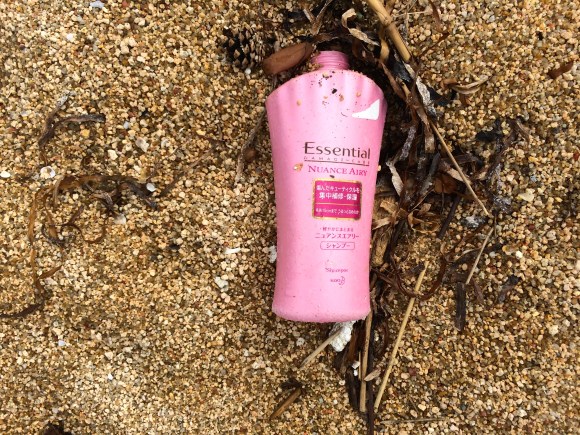
or plant flowers.
People with fresh breath,
people who wash their clothes,
and people who tie up their boxes for shipping.
Those who use plastic containers,
Those who eat fast food,
even those who (gasp!) drink milk.
In other words, it’s everybody. And only we can take responsibility for the garbage we produce. Remember, this is just one of the many beaches on one of over 700 hundred islands in Japan’s Seto Inland Sea.
Since Japan seems to be doing little towards remedying water pollution, I thought I’d introduce at least one idea that could help. Here is a device I saw recently in Australia, invented to help combat river flotsam. And it seems to work.
▼Melbourne’s “litter traps” collect floating garbage before it becomes a menace.
The litter doesn’t come from people tossing it into the river–it comes from street litter getting diverted into the river through storm drains (yep, during heavy rains, storms, and cyclones).
▼Signs near each trap explain: “This litter trap is one of 17 [placed] at the most effective collection points.”
Why isn’t anything being done in Japan? Good question!
Most people don’t realize the problem is as big as it is, or they’ve come to think it is normal. When people’s reaction to garbage in the sea is: “It comes from the rivers,” or “It’s because of the rain,” you know there is a problem. That’s just twisted thinking! The garbage problem comes from people (not the rivers) and it’s because of people (not the rain).
Or maybe, they just don’t know what to do about it. Perhaps Japan needs suggestions from people like you. After all, this is a world-wide issue being tackled by other countries as well. How does your country deal with the sea pollution?
My second guess at the reason nothing is being done is that people have yet to demand change. And this is where you can help.
If you love Japan like I do, you won’t allow this to continue. Let’s show Japan that we care about her rivers and seas. Demand change by taking the first step: share this article with your friends and on social media. Give your opinions on the subject.
Be proactive! Japan will thank you for it.
Feature Image: Wikimedia (Noctiluca in Nagasaki)
All other images Amy Chavez/RocketNews24 (unless specified)

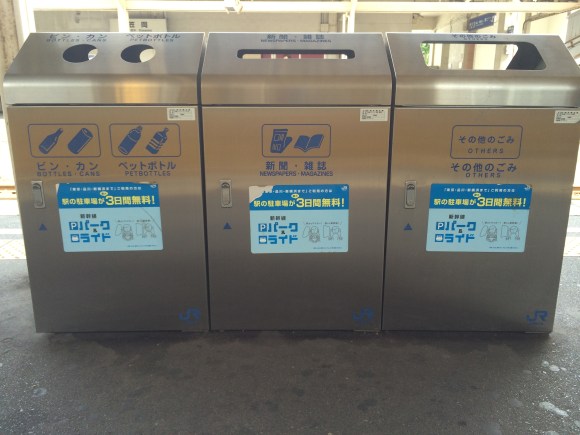
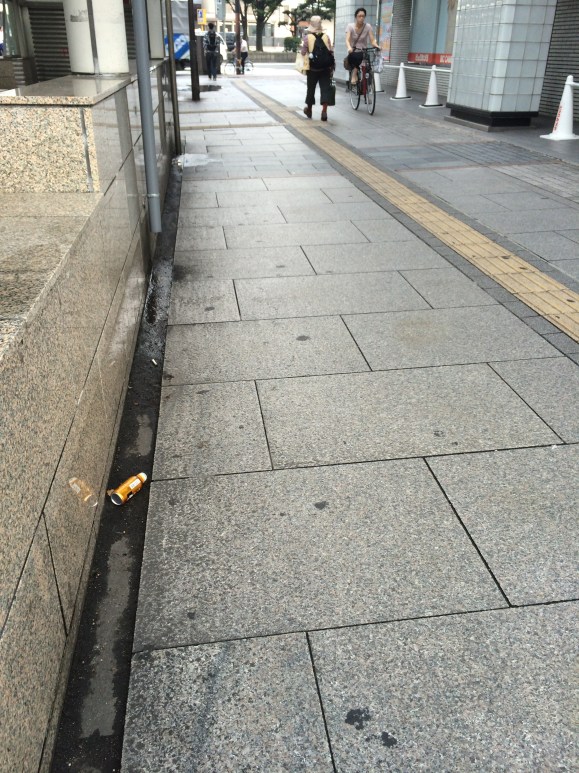
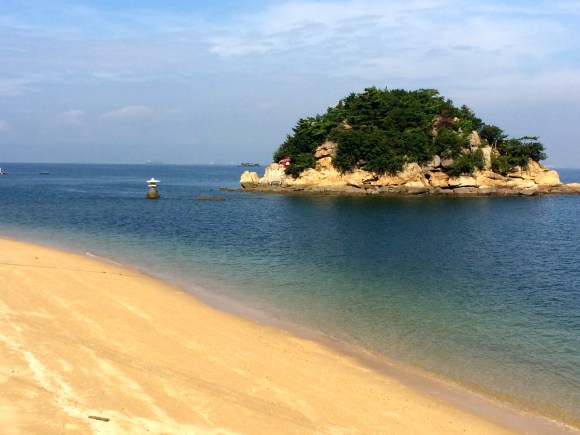
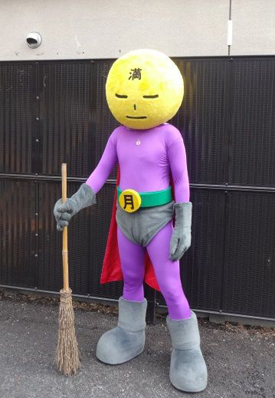 Mangetsuman
Mangetsuman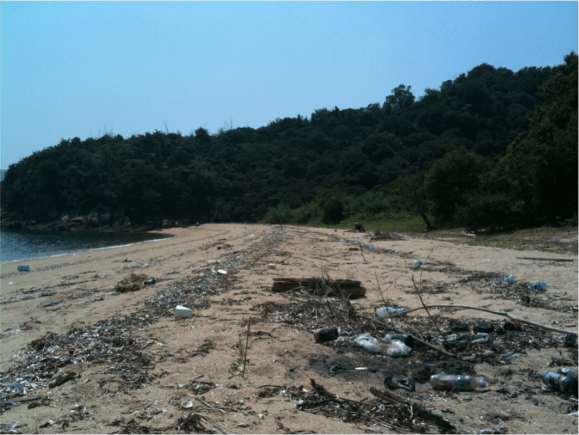
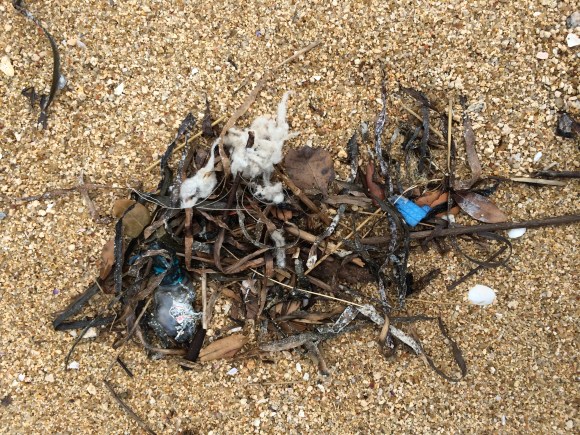
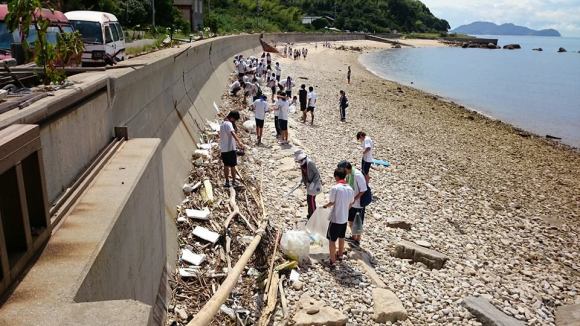
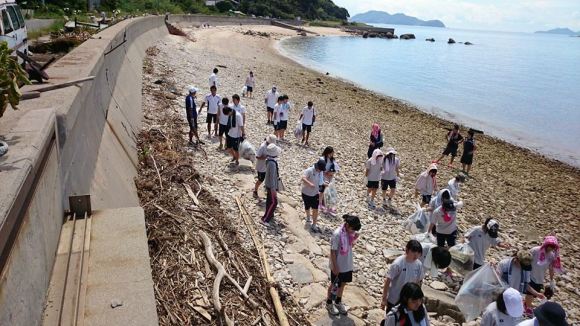
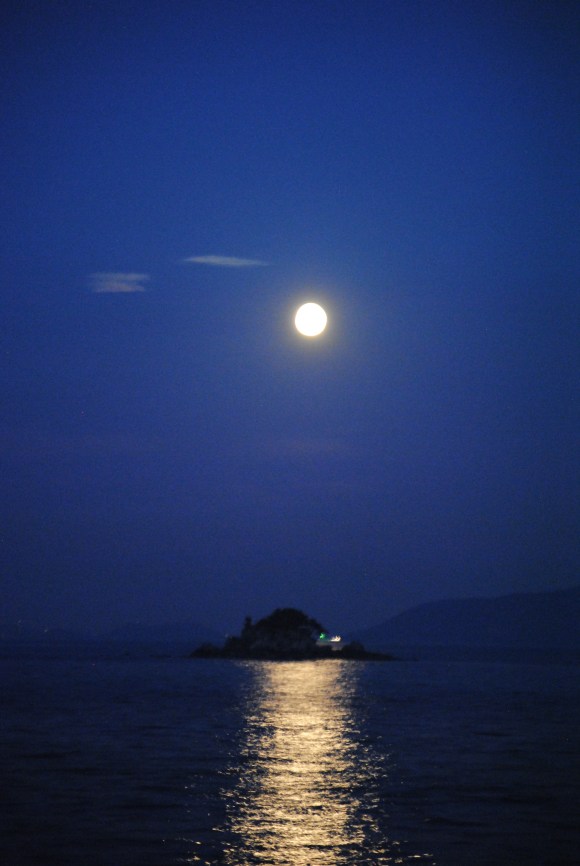
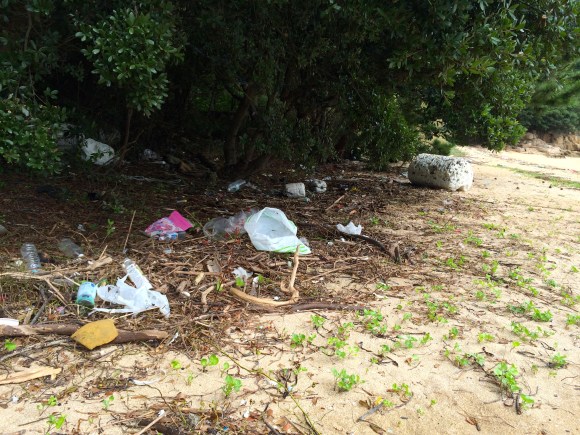
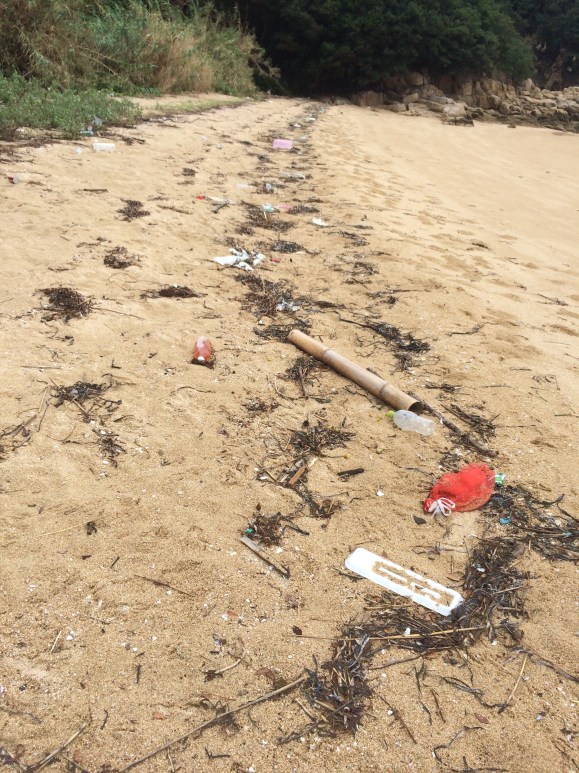
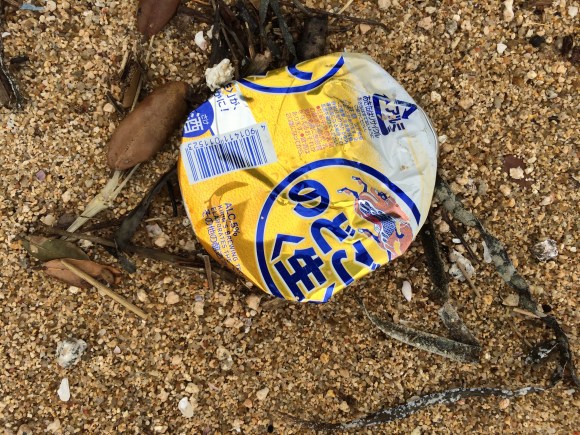
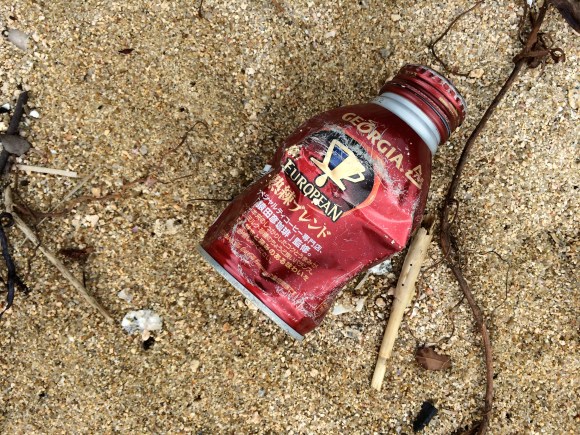
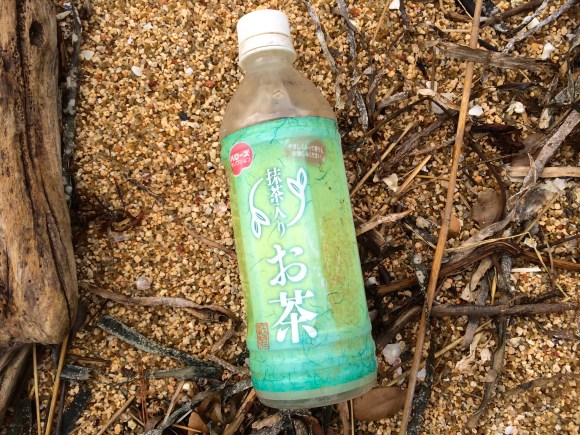
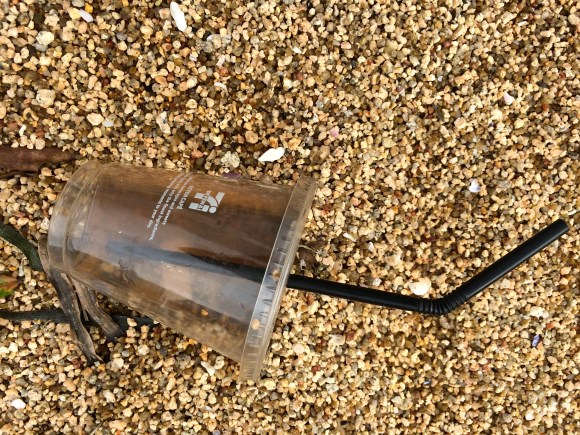
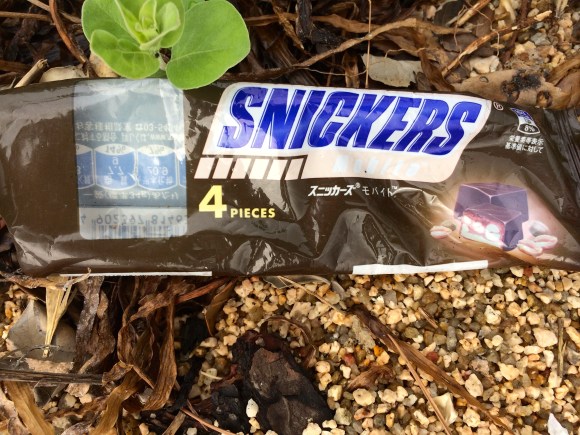
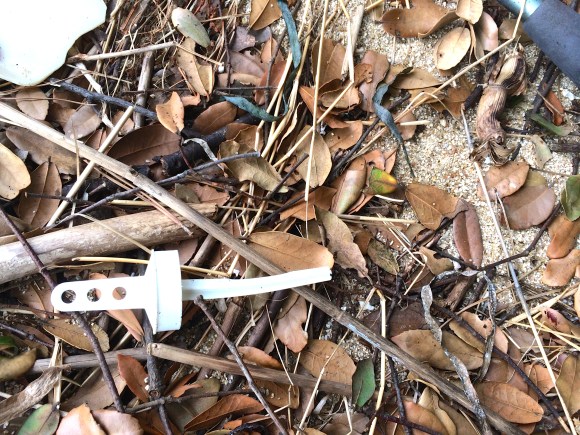
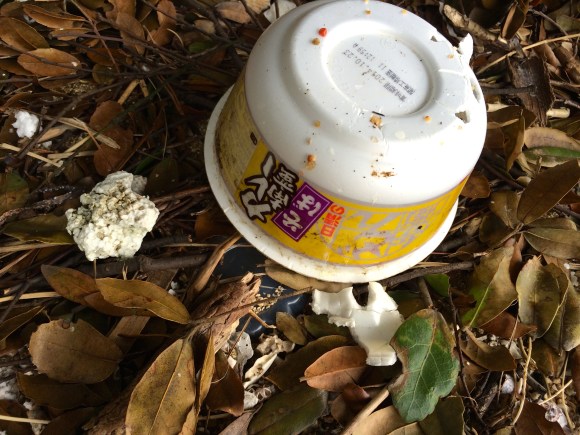
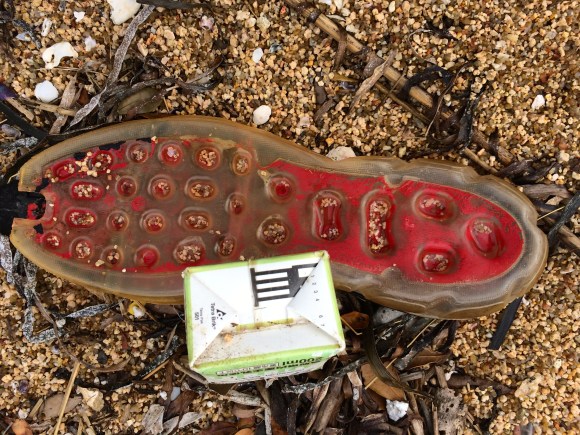
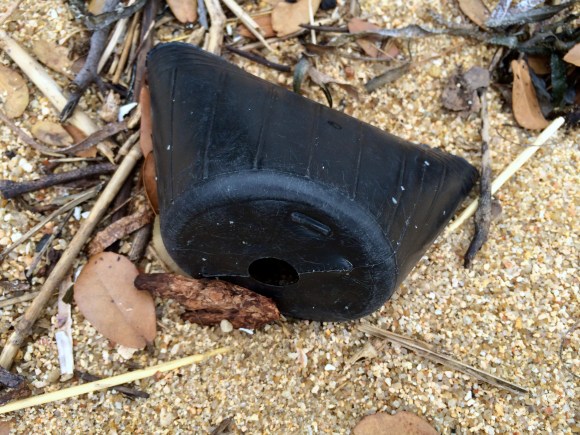
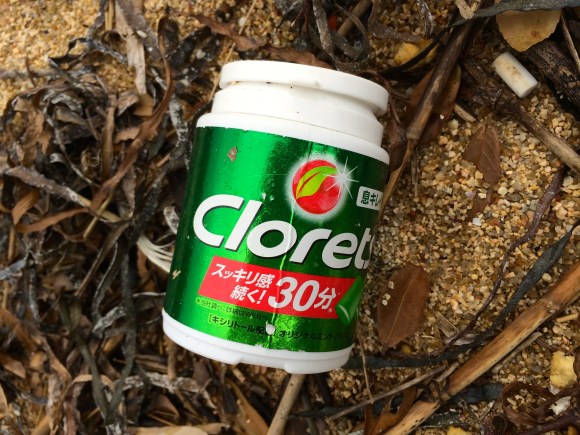
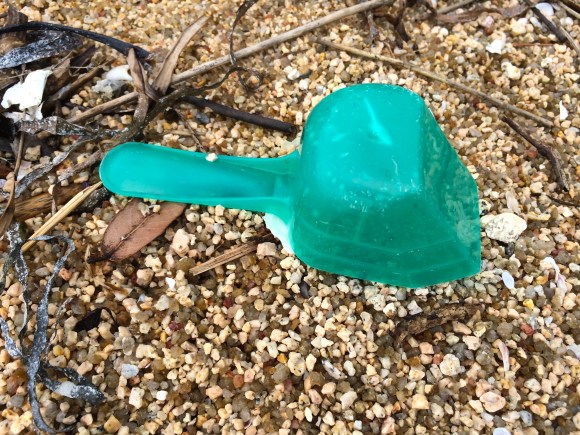
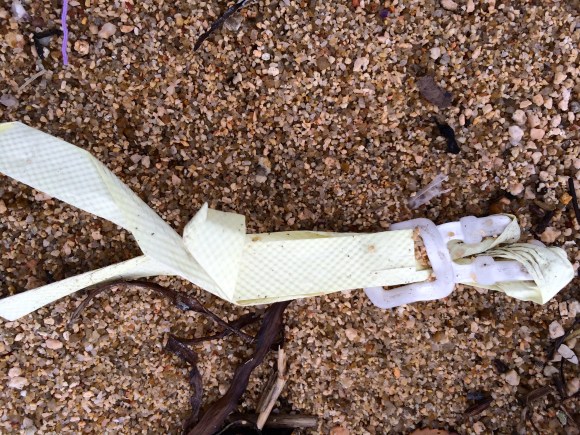
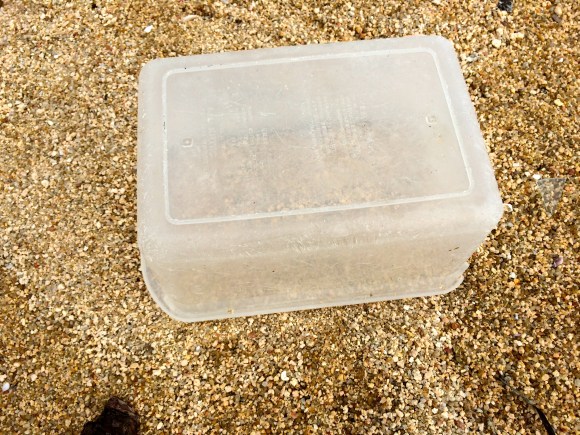
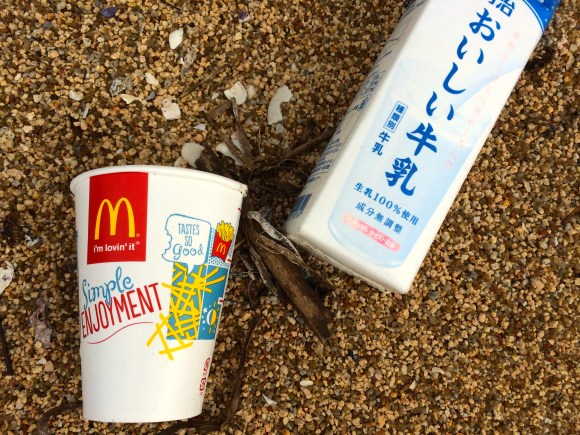
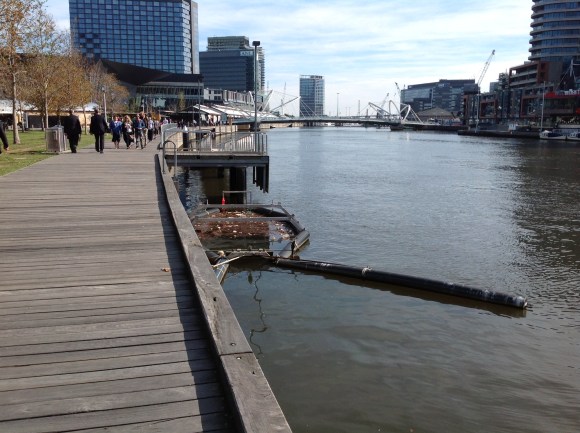
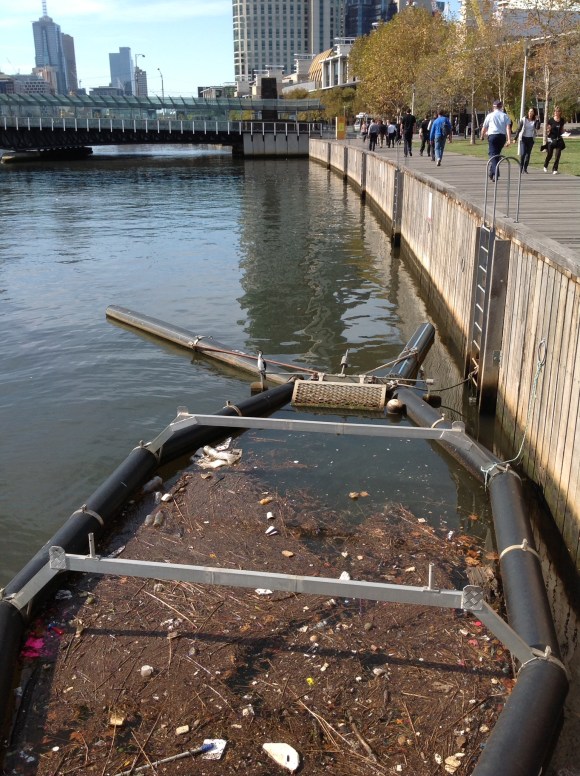
 Creepy creatures from the seabed that you can eat!【Taste Test】
Creepy creatures from the seabed that you can eat!【Taste Test】 Volunteers cleaned up 45 tons of garbage from Manila Bay beach, restored it to its former glory
Volunteers cleaned up 45 tons of garbage from Manila Bay beach, restored it to its former glory Vegetables are smarter than fruits: Three high IQ Japanese veggies
Vegetables are smarter than fruits: Three high IQ Japanese veggies Shiraishi Island needs YOUR character ideas!
Shiraishi Island needs YOUR character ideas! You party, we tidy — Volunteers, kids hit Shibuya streets to clean up after Halloween hijinks
You party, we tidy — Volunteers, kids hit Shibuya streets to clean up after Halloween hijinks How to order snacks on a Shinkansen bullet train in Japan
How to order snacks on a Shinkansen bullet train in Japan Demon Slayer: Kimetsu no Yaiba gets new roller coaster attractions and food at Universal Studios Japan
Demon Slayer: Kimetsu no Yaiba gets new roller coaster attractions and food at Universal Studios Japan New Nintendo Lego kit is a beautiful piece of moving pixel art of Mario and Yoshi【Photos】
New Nintendo Lego kit is a beautiful piece of moving pixel art of Mario and Yoshi【Photos】 Japan’s new difficult-to-drink-from beer glass protects your liver, but it’s a brutal experience
Japan’s new difficult-to-drink-from beer glass protects your liver, but it’s a brutal experience Hello, cosmetics! Clinique teams up with Hello Kitty this summer for first-time collaboration
Hello, cosmetics! Clinique teams up with Hello Kitty this summer for first-time collaboration Nintendo history you can feel – Super NES, N64, and GameCube controllers become capsule toys
Nintendo history you can feel – Super NES, N64, and GameCube controllers become capsule toys Which Studio Ghibli house would you most like to live in?
Which Studio Ghibli house would you most like to live in? Japan’s foreign population reaches historic milestone following largest-ever single-year surge
Japan’s foreign population reaches historic milestone following largest-ever single-year surge We check out the local flavors of the commonly confused Ome and Aomi areas of Tokyo in one day
We check out the local flavors of the commonly confused Ome and Aomi areas of Tokyo in one day Japanese gravure idol makes jaws drop with massive M-cup chest 【Pics & Videos】
Japanese gravure idol makes jaws drop with massive M-cup chest 【Pics & Videos】 “The most Delicious Cup Noodle in history” – Japan’s French Cup Noodle wins our heart【Taste test】
“The most Delicious Cup Noodle in history” – Japan’s French Cup Noodle wins our heart【Taste test】 Starbucks releases a cute Frappuccino and Unicorn Cake…but not in Japan
Starbucks releases a cute Frappuccino and Unicorn Cake…but not in Japan Kyoto Tower mascot termination reveals dark side behind cute Japanese characters
Kyoto Tower mascot termination reveals dark side behind cute Japanese characters McDonald’s Japan’s Soft Twist Tower: A phantom ice cream only sold at select branches
McDonald’s Japan’s Soft Twist Tower: A phantom ice cream only sold at select branches Yabai Ramen: What makes this Japanese ramen so dangerous?
Yabai Ramen: What makes this Japanese ramen so dangerous? Finally! Nintendo Japan expands Switch 8-bit controller sales to everybody, Online member or not
Finally! Nintendo Japan expands Switch 8-bit controller sales to everybody, Online member or not Japanese government wants to build luxury resorts in all national parks for foreign tourists
Japanese government wants to build luxury resorts in all national parks for foreign tourists To combat declining birth rate, Japan to begin offering “Breeding Visas” to foreigners
To combat declining birth rate, Japan to begin offering “Breeding Visas” to foreigners 10 things you should buy at 7-Eleven in Japan
10 things you should buy at 7-Eleven in Japan Studio Ghibli releases anime heroine cosplay dresses that are super comfy to wear
Studio Ghibli releases anime heroine cosplay dresses that are super comfy to wear Woman charged for driving suitcase without a license in Osaka
Woman charged for driving suitcase without a license in Osaka Studio Ghibli unveils My Neighbour Totoro miniature house model
Studio Ghibli unveils My Neighbour Totoro miniature house model Kyoto experiencing problems with foreign tourists not paying for bus fares, but not on purpose
Kyoto experiencing problems with foreign tourists not paying for bus fares, but not on purpose Fighting mild hunger with a Japanese soda that turns into jelly in the stomach【Taste test】
Fighting mild hunger with a Japanese soda that turns into jelly in the stomach【Taste test】 Studio Ghibli’s Howl’s Moving Castle tapestry unveiled in Japan for first time
Studio Ghibli’s Howl’s Moving Castle tapestry unveiled in Japan for first time McDonald’s new Happy Meals offer up cute and practical Sanrio lifestyle goods
McDonald’s new Happy Meals offer up cute and practical Sanrio lifestyle goods Sales of Japan’s most convenient train ticket/shopping payment cards suspended indefinitely
Sales of Japan’s most convenient train ticket/shopping payment cards suspended indefinitely Sold-out Studio Ghibli desktop humidifiers are back so Totoro can help you through the dry season
Sold-out Studio Ghibli desktop humidifiers are back so Totoro can help you through the dry season Japanese government to make first change to romanization spelling rules since the 1950s
Japanese government to make first change to romanization spelling rules since the 1950s Foreigner’s request for help in Tokyo makes us sad for the state of society
Foreigner’s request for help in Tokyo makes us sad for the state of society Ghibli founders Toshio Suzuki and Hayao Miyazaki contribute to Japanese whisky Totoro label design
Ghibli founders Toshio Suzuki and Hayao Miyazaki contribute to Japanese whisky Totoro label design Doraemon found buried at sea as scene from 1993 anime becomes real life【Photos】
Doraemon found buried at sea as scene from 1993 anime becomes real life【Photos】 Tokyo’s most famous Starbucks is closed
Tokyo’s most famous Starbucks is closed Princesses, fruits, and blacksmiths: Study reveals the 30 most unusual family names in Japan
Princesses, fruits, and blacksmiths: Study reveals the 30 most unusual family names in Japan Sumida River Fireworks Festival aftermath: Not everyone in Japan has perfect manners after all
Sumida River Fireworks Festival aftermath: Not everyone in Japan has perfect manners after all Fujisawa Enoshima Fireworks Festival results in one ton of garbage strewn on the beach
Fujisawa Enoshima Fireworks Festival results in one ton of garbage strewn on the beach Everything you need to know about takoyaki (octopus balls) 【Video】
Everything you need to know about takoyaki (octopus balls) 【Video】 12 beautiful Japanese train stations by the sea
12 beautiful Japanese train stations by the sea Big, drunk and furry—Everything you need to know about tanuki (plus a song about their balls!)
Big, drunk and furry—Everything you need to know about tanuki (plus a song about their balls!) Yayoi Kusama’s Yellow Pumpkin washed away during typhoon in Japan
Yayoi Kusama’s Yellow Pumpkin washed away during typhoon in Japan Tokyo Metropolitan Police shows us how to make garbage bags out of newspaper
Tokyo Metropolitan Police shows us how to make garbage bags out of newspaper Where will you go this summer? Here are the top 10 Japanese swimming spots with the nicest water
Where will you go this summer? Here are the top 10 Japanese swimming spots with the nicest water Top 10 places to see a spectacular sunset in Japan
Top 10 places to see a spectacular sunset in Japan Better than mosquito repellent – The most eco-friendly (and spiritual) way to repel pests in Japan
Better than mosquito repellent – The most eco-friendly (and spiritual) way to repel pests in Japan Beautiful “sandy beach” near Nagasaki Airport is not made of sand…it’s made of glass!
Beautiful “sandy beach” near Nagasaki Airport is not made of sand…it’s made of glass! Divine prevention – Japan using Shinto symbols to combat litter and public peeing
Divine prevention – Japan using Shinto symbols to combat litter and public peeing Happy New Year! Japan ranks top spots to view the first sunrise of 2019
Happy New Year! Japan ranks top spots to view the first sunrise of 2019 Breathtakingly beautiful beach in often-overlooked part of Japan is like a scene out of Your Name
Breathtakingly beautiful beach in often-overlooked part of Japan is like a scene out of Your Name These Pakistani students in Tokyo had never been to the beach, and that’s something we had to fix
These Pakistani students in Tokyo had never been to the beach, and that’s something we had to fix Why not celebrate your graduation with a cool boat trip to the world’s biggest tidal whirlpools?
Why not celebrate your graduation with a cool boat trip to the world’s biggest tidal whirlpools?
Leave a Reply